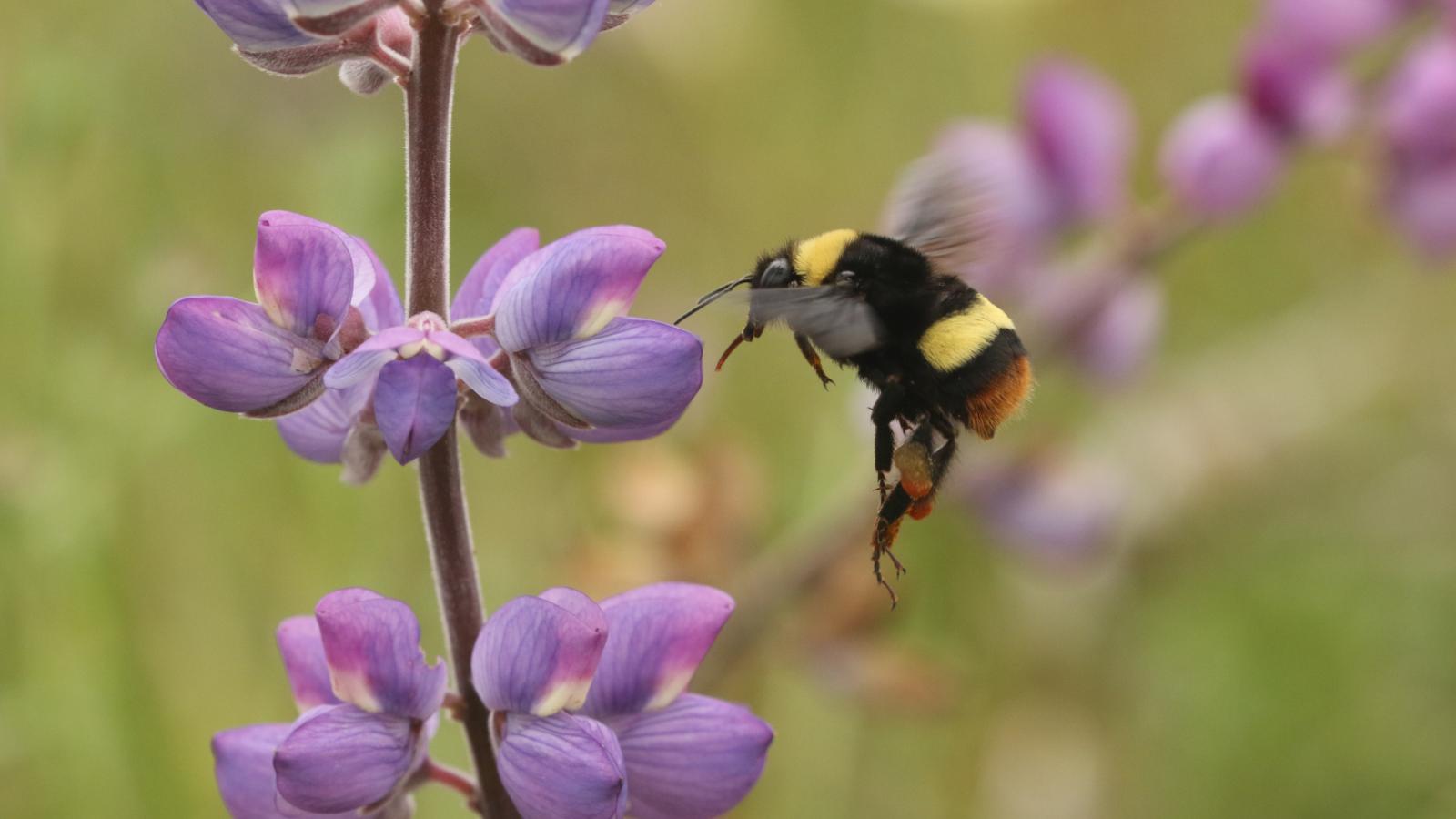Published July 3, 2025
Pollinators are an integral part of our environment, and the protection of them is of the utmost importance in maintaining and restoring healthy ecosystems. Pollinators, as the name suggests, transfer pollen from one flower to another through their natural behavior. Whether they know it or not, these animals have coevolved with the native flora, forming symbiotic relationships where both parties benefit from and rely on the others’ existence and actions.
Some pollinators are specialists, sticking to one plant or plant group, where others sample around from the smorgasbord of flowers in Midpen preserves. With 85% of flowering plants reliant on animal pollinators for reproduction, our busy buddies must be prioritized and protected.
From the beloved bees and butterflies of the bay to the treasured hummingbirds that fly atop Mount Umunhum, pollinators come in all shapes and sizes. “California is home to 1,600 native species of bees and over 1,000 species and butterflies and moths,” explained Wildlife Intern Nate Chamberlin. “Most people are only familiar with ambassador pollinators such as bumblebees, monarch butterflies and European honeybees. All pollinators play a necessary role in maintaining a healthy ecosystem, and the more we learn about each species the better equipped we are to protect them.”
Currently, Midpen is on the search for the endangered Crotch’s bumblebee, following a recent sighting in Portola Valley and multiple sightings in the south bay. Unlike honeybees, who nest in swarms from 20,000 to 80,000 and have multi-year colony cycles, Crotch’s bumblebees often nest in groups of 20 to 400 and have annual colony cycles that last from spring to fall. Their nesting patterns and low population count makes finding one a tall order.
“Crotch's bumblebee relies heavily on milkweed during the summer, making it an ally in conservation efforts to the darling monarch butterfly who also rely on milkweed. We already make an effort to promote the growth of milkweed, and the presence of Crotch’s bumblebee in the area is another reason to do so,” he added.
Midpen is working hard to protect these key creatures and always has pollinators best interests in mind.

